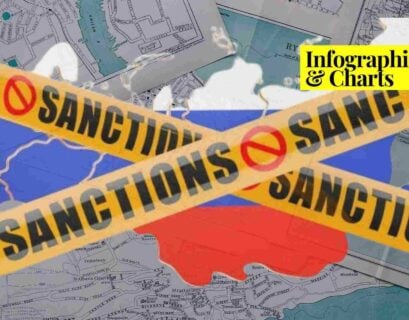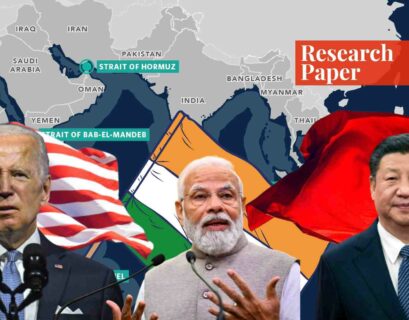Introduction
Japan’s national security has depended on the US since World War II. American troops were allowed to establish army bases in Japan for the latter’s national security after the end of the Great War. Later, Tokyo established its Self-Defense Force (SDF) in 1954. America also used its troops in Japan for other strategic ends, like in the Vietnam war. However, the changing security dynamics of the region in the 21st century have prompted Japan to increase its military might.
Security threats to Japan are mounting from China’s expanding diplomatic and military presence in the region, North Korea’s surging nuclear capabilities, and a resurgent Russia. To counter these threats, Japan unveiled its strategy to expand military power and raise its GDP’s spending on national security. Three documents have been made public to guide the military force in Japan to improve its capabilities.
The Three Documents
Prime Minister Fumio Kishida unveiled three documents that will make way for Japan’s strategy for defense and targets to ensure national security: the National Security Strategy (NSS), the National Defense Strategy (NDS), and the Defense Buildup Program (DBP).
The NSS explains that “under the vision of a Free and Open-Indo Pacific (FOIP), it is crucial for Japan’s security to cooperate with allies and like-minded countries (the US, the UK, Australia, India, France, etc.) to ensure peace and stability in the region.” It will also shape Japan’s diplomacy, defense, economic security, cyber, technology, and intelligence over the next five years.
The NDS will shape the SDF’s three forces, enhancing space and cyber capabilities and attaining counterstrike capabilities. The third document, the DBP, will present arrangements for defense expenditures. About $320 billion will be spent in this five-year plan on the country’s defense.
Essential Aspects of the Strategy
The strategy’s first and most crucial aspect is its introduction of a long-range conventional missile option to the Japan Coast Guard. Before the new strategy, Japan had been using a short-range strike missile to defend its coastal lines. Japan will now be able to strike long-range targets inside an adversary’s territory. The strategy will also encourage indigenous production necessary for national security.
Japan’s Ministry of Defense will reserve a budget for innovation in civilian research and development (R&D) and spending. Finally, the new national security strategy will develop the Japan SDF’s resilience to fight in a conflict or other crisis considered a threat to national security.
The SDF will have access to civilian airfields and other platforms such as the F-35 fighter jet and destroyers. The Japanese government will also increase its defense budget from 1% (from the 1970s) of GDP to 2% of GDP within 2023-27. It will be soaring from 5 trillion yen (this fiscal year) to 11 trillion yen (2027).
Threats to Japan’s National Security
China: The Major Challenge
China’s fast military upgradation and a series of military exercises have threatened Japan’s national security. China and Japan’s relations have become tense because both claim the Senkaku Islands or Diaoyudao Islands. Further, the Chinese ballistic missile has also struck Japan’s exclusive economic zone. China’s claims of the islands and territories and expanding military deployments in the region have threatened Japan.
The updated national security strategy calls China “the greatest strategic challenge” for Japan. However, Japan continues to see China as an economic power, second to the US, to engage it in world trade on globally accepted practices. In November, both Xi and Kishida met in Bangkok and agreed to stable bilateral relationships between the two countries.
North Korea’s Nuclear Capabilities
The nuclear-ambitious country has launched about ninety-two ballistic and other missile tests in 2022. Kim said threats from the enemies, the US, and its allies, compel the country to bolster nuclear weapons. North Korea has also launched a more lethal intercontinental ballistic missile, enough to hit long-range targets.
North Korea’s irresponsible actions have created unprecedented threats to Japan’s national security. The national security strategy has declared North Korea’s ambitions the biggest threat to Japan.
Threats from Russia
The Russian invasion of Ukraine has been a particular event that has compelled many countries to ramp up military capabilities, especially in Europe and East Asia. Japan joined hands with the West to sanction Russia for the invasion of Ukraine. The Russian military has increased military drills near Japan’s borders. Thus, the pacifist Japan has changed its policy to acquire a long-range missile to strike any hostile territory with counter-preventive measures.
Is this a Change from Japan’s Defensive Strategy?
Japan has not acquired any strategic weapons or long-range counter missiles since the end of World War II. This pacifism of Japan’s security policy has been included in the country’s constitution under Article 9, known as exclusive self-defense (Senshu Boei). The Japanese government has clarified that the exclusive self-defense framework will remain intact.
The new security strategy will add to the country’s capabilities for deterrence. The changes in the document are for the acquisition of “counterstrike capabilities” to hit a hostile target. According to Japan’s government officials, there will be no preemptive strikes.
Response from China and the US
The US welcomed Tokyo’s move as one that will strengthen regional deterrence. The US Secretary of State also believes that the document reflects a crucial alignment between the two allies’ visions. The US Secretary of State also called Japan “the indispensable partner” in ensuring global stability.
The national security strategy is the culmination of “the Abe Doctrine” to secure the country and an excellent opportunity for the US-Japan alliance to address regional issues effectively. At the same time, China has denounced the document by sending an aircraft carrier to waterways near the Okinawa Prefecture, according to Japan Times.
If you want to submit your articles and/or research papers, please check the Submissions page.
The views and opinions expressed in this article/paper are the author’s own and do not necessarily reflect the editorial position of Paradigm Shift.



















